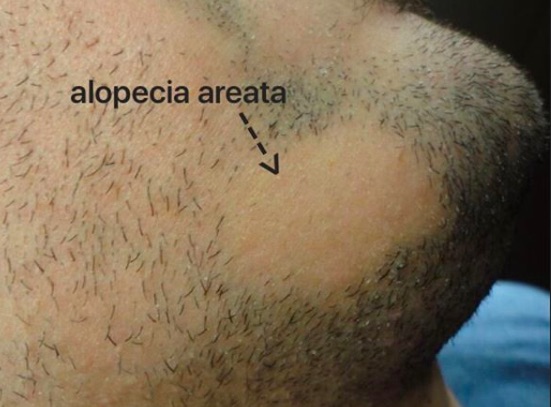Use of Isotretinoin for Facial papules in FFA
Facial papules in FFA
Facial papules occur in a subset of patients with frontal fibrosing alopecia. Its’ been difficult to ascertain what exactly these facial papules represent. Some of the difficulty comes from the limited number of biopsy specimens that have been obtained from such pappules. Some investigators have found small vellus hairs in the biopsies of facial papules, whereas others have only found hypertrophic sebaceous glands.
Dr. Aline Donati and her colleagues were among the first to rigorously study facial papules in patients with FFA. She proposed that these papules contained vellus hairs and these vellus hairs showed typical LPP findings with perifollicular inflammation and fibrosis.
In 2017, Pedrosa and colleagues from Portugal set out to further examine the features of these facial papules. The researchers showed that papules were present in 62 of 108 patients. 10 patients with facial papules underwent biopsy. All 10 of these patients had similar histological findings, namely hypertrophic sebaceous glands but no evidence of a hair follicle in the biopsy and no evidence of lichenoid inflammation. Interestingly the skin was soft and thin which allowed for easy visualization of the sebaceous glands.
Oral isotretinoin was reported helpful for these patients. The dose was 10 mg every other day and this was typically added to standard therapies that the patients was already on (such as anti-androgen therapies). Improvement was rapid – most patients saw changes with 2-4 months.
Conclusion:
This study is interesting for two reasons.
1) It confirms that some biopsies for facial papules in patients with FFA will not contain hairs nor inflammation. Whether these sampled areas once contained hairs is unknown but presumably they did. The hypothesis then is that the vellus hairs were destroyed by the inflammation.
SEE: CURRENT HYPOTHESIS FOR FACIAL PAPULES IN FFA
2) The study is also interesting because it draws attention to the fact that low dose isotretinoin may in fact be helpful as a treatment for these facial papules.
Reference
Pedros et al. Yellow facial papules associated with frontal fibrosing alopecia: A distinct histologic pattern and response to isotretinoin. Journal of the American Academy of Dermatology 2017; 77:754-765
Donati et al. Facial papules in frontal fibrosing alopecia: evidence of vellus follicle involvement. Arch Dermatol 2011; 147: 424-1427.
This article was written by Dr. Jeff Donovan, a Canadian and US board certified dermatologist specializing exclusively in hair loss.

